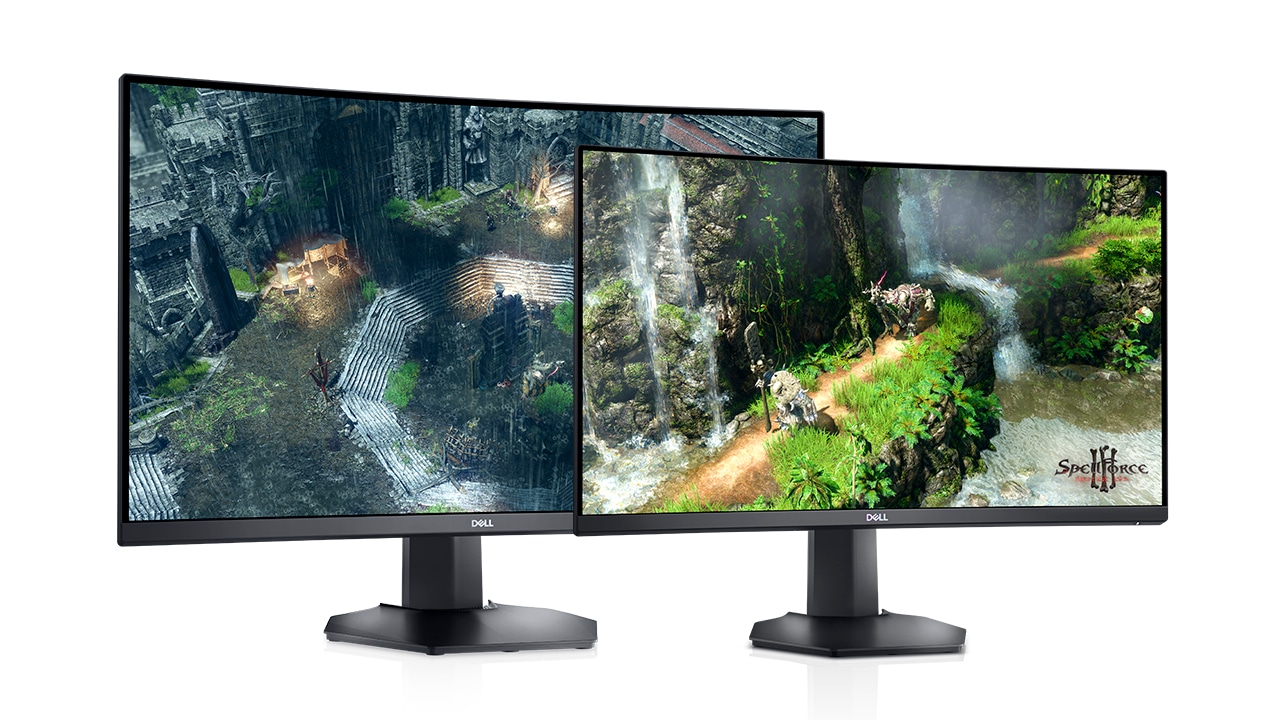Looking for the best gaming monitor in 2025? The gaming landscape is evolving faster than ever, with new display technologies and features transforming how we experience games. Whether you’re a competitive esports pro chasing every millisecond of advantage or a story-driven gamer craving breathtaking visuals, choosing the right monitor can elevate your gameplay and immersion to new heights.
Why the Right Gaming Monitor Matters in 2025
In recent years, we’ve seen dramatic leaps in display tech: OLED panels delivering perfect blacks and vibrant colors, Quantum Dot technology enhancing color accuracy, and ultra-high refresh rates pushing motion smoothness to the limit. But it’s not just about specs on paper — features like adaptive sync (G-Sync and FreeSync), low input lag, HDR support, and even ergonomics play crucial roles in creating a seamless gaming experience.
The Reigning Champion: MSI MPG 321URX QD-OLED

At the pinnacle of gaming monitors in 2025 is the MSI MPG 321URX QD-OLED. This monitor pairs a stunning 4K resolution with a blistering 240Hz refresh rate — a rare combination that few displays can match. Thanks to its OLED panel, it delivers true blacks, infinite contrast ratios, and vibrant colors that make game worlds come alive like never before. The Quantum Dot enhancement further boosts color volume, ensuring every shade pops with lifelike accuracy.
This makes the MSI MPG 321URX QD-OLED a dream for both fast-paced competitive shooters, where every frame counts, and single-player RPG or adventure fans who crave cinematic visuals. Its fast response times and smooth motion handling minimize blur and ghosting, while HDR support adds dazzling highlights and deeper shadows.
Best Budget Option: Dell S3222DGM

Not everyone needs or can afford a premium OLED display, and thankfully, 2025 offers fantastic budget-friendly alternatives. The Dell S3222DGM is a standout in this category, delivering solid performance with a large, curved 32-inch VA panel. While it lacks OLED’s perfect blacks, it offers excellent contrast and color reproduction for its price, along with a 165Hz refresh rate and FreeSync support for tear-free gaming.
This monitor is perfect for gamers who want a big immersive screen without sacrificing smoothness or breaking the bank. Its curved design adds to the immersion, especially in racing and simulation games.
Other Top Gaming Monitor Trends and Picks in 2025
- Quantum Dot QHD Monitors: The MSI MAG 274QRF QD E2 is a top pick for gamers seeking a balance of price and performance. Its 27-inch QHD display with Quantum Dot tech provides vibrant colors and a smooth 165Hz+ refresh rate, ideal for competitive gaming and general use alike.
- 240Hz and Beyond: For esports enthusiasts, monitors with refresh rates of 240Hz or higher remain the gold standard. These displays drastically reduce motion blur and input lag, giving players an edge in fast-paced games like Valorant and CS.
- 4K at High Refresh Rates: While 4K gaming monitors traditionally capped at 144Hz, 2025 sees more models pushing refresh rates even higher, thanks to advancements in GPU power and display tech. These monitors deliver stunning detail and smooth gameplay, perfect for those with high-end rigs.
- Curved and Ultrawide Displays: Curved monitors, especially ultrawide models, continue to grow in popularity. They wrap the field of view, enhancing immersion in RPGs, simulators, and open-world games by filling peripheral vision.
- Top Brands to Watch: ASUS, LG, Samsung, and MSI dominate the market with consistent innovation. They offer a range of panels — from fast IPS to OLED — with features like G-Sync/FreeSync compatibility, HDR10+ support, and customizable RGB
Key Takeaways
- The MSI MPG 321URX QD-OLED leads the market with its 4K resolution, 240Hz refresh rate, and superior image quality.
- Budget-conscious gamers can find excellent performance in more affordable options like the Dell S3222DGM.
- OLED technology continues to set the standard for gaming monitors with superior HDR performance and response times.
Technical Specifications and Features
Modern gaming monitors offer impressive technical capabilities that significantly enhance the gaming experience. Key advancements in resolution, refresh rates, and connectivity options have transformed how games look and feel.
Resolution and Panel Technology
Gaming monitors in 2025 feature several panel technologies, each with distinct advantages. QD-OLED panels, as seen in the MSI MPG 321URX, deliver superior contrast ratios and vibrant colors while maintaining fast response times. These panels excel at producing deep blacks and bright highlights, making them ideal for HDR content.
IPS panels remain popular for their excellent color accuracy and wide viewing angles. The Xiaomi 27-inch 1440p monitor utilizes IPS technology to deliver great contrast and colors while maintaining gaming performance.
VA panels, like those in the Dell S3222DGM, offer a middle ground with better contrast than IPS but slightly slower response times. These monitors typically provide good value for budget-conscious gamers.
Resolution options include:
- 1080p (Full HD): Budget-friendly with high refresh rates
- 1440p (QHD): Popular middle ground for performance and visuals
- 4K (UHD): Premium visual experience with increasing refresh rate options
Refresh Rate and Response Time
Refresh rates have increased dramatically in recent years. High-end gaming monitors now offer up to 240Hz refresh rates, as seen in the MSI MPG 321URX QD-OLED. This means the screen can display up to 240 frames per second, creating ultra-smooth motion.
Mid-range options typically feature 165Hz or 180Hz refresh rates, like the Xiaomi monitor with its 180Hz capability. Even budget monitors now commonly offer 144Hz, a significant improvement over standard 60Hz displays.
Response time measures how quickly pixels can change color. The best gaming monitors feature:
- OLED panels: As low as 0.03ms response times
- IPS panels: Around 1ms with overdrive
- VA panels: 1-4ms typically
Adaptive sync technologies like NVIDIA G-Sync and AMD FreeSync prevent screen tearing by synchronizing the monitor’s refresh rate with the GPU’s frame output. G-Sync Ultimate offers premium features including extreme luminance (1,000 nits) for enhanced HDR.
Connectivity and Compatibility
Modern gaming monitors offer robust connectivity options to accommodate multiple devices and next-gen consoles. HDMI 2.1 ports have become essential for connecting to PS5 and Xbox Series X consoles, supporting 4K gaming at 120Hz.
DisplayPort remains the preferred connection for PC gaming, with DisplayPort 1.4 supporting high refresh rates at 4K resolution. USB-C connectivity is increasingly common, allowing single-cable connections to laptops with power delivery and video signal.
Compatible features for console gaming include:
- Variable Refresh Rate (VRR) support
- Auto Low Latency Mode (ALLM)
- 4K/120Hz capability via HDMI 2.1
Additional connectivity features often include USB hubs, headphone jacks, and sometimes KVM switches for controlling multiple devices. High-end monitors may include features like picture-in-picture modes and screen splitting capabilities for multitasking.
Design and Ergonomics
Gaming monitors have evolved significantly in form and function, with manufacturers paying close attention to both aesthetic appeal and practical usability. Today’s best gaming displays balance sleek designs with features that enhance comfort during extended gaming sessions.
Monitor Styles and Form Factors
The gaming monitor market offers diverse form factors to suit different preferences. Ultrawide monitors have gained popularity for providing immersive gaming experiences with their 21:9 aspect ratios, giving players expanded peripheral vision in games. Models like the Alienware AW3423DWF showcase the ultrawide format with a gentle curve that wraps the display around the user’s field of view.
Curved gaming monitors continue to dominate high-end offerings. The Samsung Odyssey Neo G8 features an aggressive 1000R curve that matches the natural curvature of the human eye. This design reduces eye strain during marathon gaming sessions.
Traditional flat panels remain relevant for competitive gamers who prioritize consistent viewing angles and distortion-free images. These displays often feature slim bezels and adjustable stands with height, tilt, and swivel options.
Color Performance and Accuracy
Display technology has made remarkable advances in color reproduction. QD-OLED panels, found in premium monitors like the MSI MPG 321URX, deliver exceptional color saturation and accuracy while maintaining deep blacks. These displays typically cover 100% of the sRGB color space and significant portions of wider gamuts like DCI-P3.
IPS panels continue to offer reliable color performance at various price points. They provide excellent color accuracy and wide viewing angles, making them versatile choices for both gaming and content creation.
Local dimming technology has improved contrast ratios dramatically in LED-backlit monitors. Mini-LED implementations allow for hundreds of dimming zones, creating OLED-like contrast without the potential for burn-in. This technology enables HDR content to display with striking brightness and detail in both light and dark scenes.
Frequently Asked Questions
Gaming monitors continue to evolve with new technologies and features hitting the market regularly. The latest top performers offer impressive specifications that enhance gameplay across different price points and use cases.
What are the top-rated 4K gaming monitors for high-resolution gaming?
The MSI MPG 321URX QD-OLED stands out as the premier 4K gaming monitor right now. It features a stunning QD-OLED panel that delivers exceptional color accuracy and contrast.
This 32-inch display offers an impressive 240Hz refresh rate, making it ideal for both competitive and visually stunning games. The combination of 4K resolution and OLED technology provides unmatched visual fidelity.
Other notable contenders include the Samsung G8 4K, which balances performance and value with its high refresh rate and HDR capabilities.
Which monitors are considered the best for PlayStation 5 gaming?
HDMI 2.1 monitors with 4K resolution and 120Hz capabilities are optimal for PlayStation 5 gaming. These specifications allow players to take full advantage of the console’s power.
Models with VRR (Variable Refresh Rate) support provide smoother gameplay by synchronizing the monitor’s refresh rate with the console’s output. This eliminates screen tearing and stuttering during intense gaming sessions.
Many gamers favor 27-32 inch displays for console gaming as they provide an immersive experience without requiring excessive viewing distance.
What are the most recommended gaming monitors with a 240Hz refresh rate?
The MSI MPG 321URX QD-OLED combines a 240Hz refresh rate with 4K resolution, making it a premium choice for competitive gamers who don’t want to sacrifice visual quality.
For those focused purely on performance, several 1080p and 1440p monitors offer 240Hz refresh rates at more accessible price points. These displays prioritize motion clarity and response times over resolution.
IPS and OLED panels at 240Hz provide better color reproduction than older TN panel technology while maintaining the speed competitive gamers demand.
What is the best budget-friendly gaming monitor that doesn’t sacrifice quality?
Budget-conscious gamers should consider 1080p monitors with 144Hz refresh rates, which offer excellent performance without the premium price of higher resolutions.
Several manufacturers now offer VA and IPS panels in the budget segment, providing better color accuracy and viewing angles than older budget models. These improvements make budget options more viable for both gaming and general use.
Features like adaptive sync technology (FreeSync/G-Sync) are now common even in lower-priced monitors, eliminating screen tearing without the cost of premium models.
Which gaming monitor models are professional gamers predominantly using?
Professional esports players typically prioritize high refresh rates (240Hz or higher) and fast response times over resolution. Many use 1080p displays to maintain maximum frame rates.
TN panels remain popular in professional settings due to their minimal input lag, though high-performance IPS displays are gaining traction. These newer panels offer improved visuals without sacrificing the speed competitive gaming demands.
Monitor size preferences among professionals tend toward 24-27 inches, allowing for the entire screen to remain in their field of view during competitive play.
What are the standout 1440p gaming monitors for gamers seeking a balance between performance and resolution?
The MSI MAG 274QRF QD E2 is widely recognized as an excellent 1440p option. It offers a fast IPS display with vibrant colors and strong overall performance, making it ideal for gamers who want balance.
1440p resolution at 27 inches provides the sweet spot between visual clarity and performance. Games look significantly sharper than 1080p while being less demanding than 4K.
Many 1440p monitors now offer refresh rates of 144Hz to 240Hz, providing smooth gameplay without requiring the most expensive graphics cards. This makes them accessible to a wider range of gamers.







